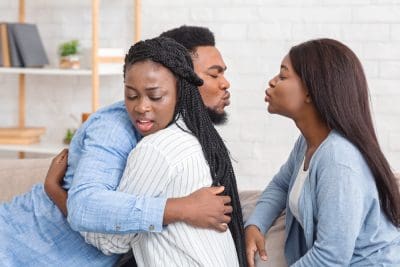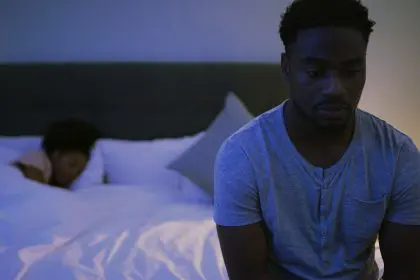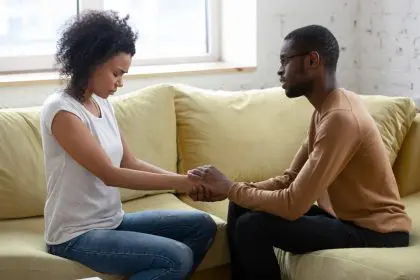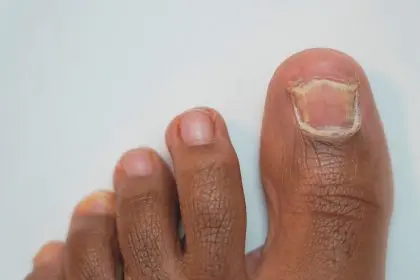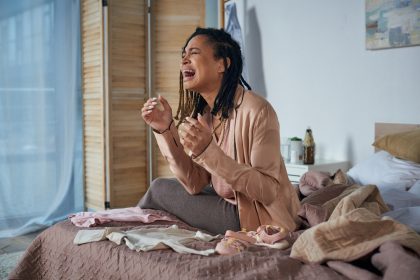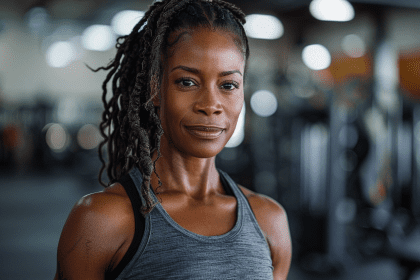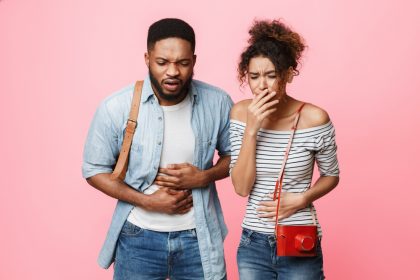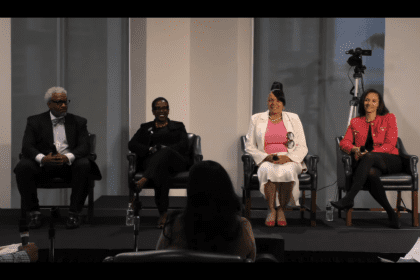Your partner’s words might say they trust you, but their body is having a completely different conversation. While they’re telling you about their day or discussing weekend plans, their subconscious is broadcasting trust signals through tiny movements, postures, and behaviors they don’t even realize they’re doing.
These involuntary body language cues are far more reliable than verbal declarations of trust because they bypass conscious control. Your partner can’t fake the way their nervous system responds to your presence, and they can’t consciously manufacture the subtle physical behaviors that only emerge when someone feels genuinely safe and secure with another person.
Learning to read these subconscious trust signals can give you incredible insight into the true health of your relationship. Some of these signs are so subtle you might have been missing them entirely, while others are happening right in front of you but you never realized they were indicators of deep emotional security.
1. The way they position their body speaks volumes
When your partner truly trusts you, they unconsciously orient their entire body toward you during conversations, even in crowded spaces. This isn’t just polite attention, it’s their nervous system signaling that you’re their primary focus and safe harbor in any environment.
Their feet point toward you even when they’re sitting sideways or engaged in other activities. Foot direction is one of the most honest body language indicators because people rarely think about where their feet are pointing, making it a reliable measure of genuine interest and trust.
You’ll notice they don’t create physical barriers between you two. They don’t cross their arms, hold objects in front of their torso, or position furniture as subtle shields. Instead, they keep their body open and accessible, signaling that they have nothing to hide or protect from you.
During conversations, they lean slightly toward you rather than maintaining rigid upright posture or leaning away. This forward inclination happens automatically when someone feels drawn to and safe with another person, indicating they want to be closer rather than maintaining distance.
2. Their hands tell the real story
Trusted partners show relaxed, open hand positions around you. Their palms are visible more often than hidden, their fingers are loose rather than clenched, and they gesture freely without restricting their movements. Tense, hidden, or controlled hand positions often indicate discomfort or guardedness.
They touch you casually and frequently without apparent thought or hesitation. These aren’t necessarily romantic touches, but rather the unconscious contact that happens when someone feels completely comfortable in your physical space. Light touches on your arm during conversation, brief hand contact when passing objects, or casual shoulder bumps all indicate deep trust.
When they’re thinking or processing information, they might touch their own face, neck, or hair in your presence without self-consciousness. These self-soothing gestures only happen around people they trust completely, because feeling vulnerable while engaging in unconscious behaviors requires significant emotional safety.
Their hands remain steady and controlled rather than fidgety or restless when you’re discussing important topics. Excessive fidgeting often indicates anxiety or discomfort, while calm hand movements suggest they feel secure enough to have difficult conversations without their nervous system going into overdrive.
3. How their eyes reveal deep security
Eye contact with a trusted partner feels effortless and natural rather than forced or intermittent. They look at you directly during conversations without frequently looking away, checking their phone, or scanning the environment for distractions. Their attention feels fully present and engaged.
Their pupils dilate slightly when looking at you, even in normal lighting conditions. Pupil dilation happens automatically when we’re looking at something or someone we find appealing and trustworthy. This response is completely unconscious and impossible to fake convincingly.
You’ll catch them looking at you when they think you’re not paying attention, and instead of quickly looking away when caught, they smile or maintain the eye contact comfortably. People only engage in this kind of casual observation with people they trust and feel positively about.
During emotional conversations, they maintain eye contact even when discussing difficult topics, rather than avoiding your gaze or looking down. The ability to maintain visual connection during vulnerability indicates they trust you to handle their emotions with care.
4. Their breathing patterns change around you
When your partner trusts you deeply, their breathing naturally synchronizes with yours during close conversations or relaxed moments together. This unconscious matching happens when people feel deeply connected and comfortable with each other.
Their overall breathing appears deeper and more relaxed in your presence compared to how they breathe around other people or in stressful situations. Shallow, rapid breathing indicates anxiety or discomfort, while deep, steady breathing suggests genuine relaxation and trust.
You might notice they sigh contentedly when settling in next to you or arriving home to find you there. These aren’t sighs of frustration but rather the kind of exhales that happen when tension leaves the body because someone feels safe and can finally relax.
5. The vulnerability they show without realizing it
Trusted partners expose vulnerable body parts without conscious awareness. They might turn their back to you while doing other activities, expose their neck by tilting their head, or position themselves where you could easily surprise them. These behaviors only happen when someone’s nervous system isn’t worried about potential threats.
They fall asleep easily in your presence, whether it’s on the couch during a movie or taking naps together. The ability to lose consciousness around another person requires absolute trust, since sleep is our most vulnerable state. If they can drift off while you’re nearby, their subconscious considers you completely safe.
Their posture becomes more relaxed and less controlled around you over time. They might slouch comfortably, stretch without self-consciousness, or adopt casual positions they wouldn’t assume around people they’re trying to impress or protect themselves from.
6. How they handle their personal space
A trusting partner doesn’t flinch or tense up when you move into their personal space unexpectedly. They’ve unconsciously expanded their comfort zone to include you, so your presence within arm’s reach feels natural rather than intrusive.
They don’t monitor or guard their personal belongings when you’re around. Their phone might lie unlocked nearby, their wallet stays accessible, and they don’t feel the need to keep track of their possessions when you’re in the same space. This casual attitude toward personal items indicates they don’t perceive you as a threat.
You’ll notice they’re comfortable being physically closer to you than the typical social distance, even in non-romantic contexts. They naturally gravitate toward closer proximity because their nervous system has categorized you as safe and trustworthy.
7. The way they move changes everything
Their movements become more fluid and natural around you, rather than controlled or calculated. When people don’t trust someone, they tend to monitor and modify their body language consciously. With trusted partners, movements flow more organically because they’re not worried about sending wrong signals or protecting themselves.
They mirror your movements unconsciously, matching your pace when walking together, copying your posture during conversations, or synchronizing other physical behaviors. This mirroring happens automatically between people who feel connected and comfortable with each other.
Their startle response is diminished around you. If you accidentally make a noise or move suddenly, they might look up but won’t jump or show signs of alarm. Their nervous system has learned that surprising movements from you aren’t likely to be threatening.
8. What their defensive behaviors reveal
The absence of defensive positioning is just as telling as positive trust signals. Partners who trust you don’t angle their bodies away, create physical barriers, or position themselves near exits during conversations. They’re comfortable being “trapped” in conversations or physical spaces with you.
They don’t engage in self-protective gestures like covering their throat, crossing their arms over their chest, or creating distance when topics become emotionally challenging. Instead, they remain physically open and accessible even during difficult discussions.
9. Your presence changes their entire energy
Perhaps the most telling sign of trust is how your partner’s entire energy shifts when you enter a room. Their shoulders might drop slightly, their facial expression softens, and their overall demeanor becomes more relaxed and authentic. It’s as if they can finally stop performing for the outside world and just be themselves.
This energetic shift happens because trust allows people to drop their social masks and defensive postures. When someone truly trusts you, your presence signals safety rather than another person they need to manage or impress.
These subconscious signals paint a picture of trust that goes far deeper than words ever could. Your partner’s body is constantly broadcasting how they really feel about you, and learning to read these signals can give you profound insight into the true foundation of your relationship.


